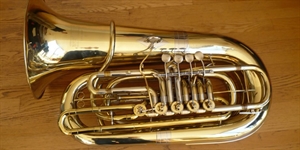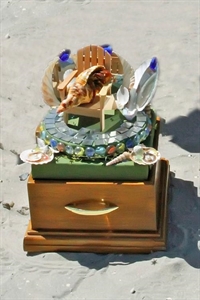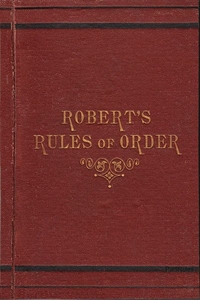Tuba Day 2025 is on Friday, May 2, 2025: facts on a tuba instrument?
Friday, May 2, 2025 is Tuba Day 2025. International Tuba Day International Tuba Day

The tuba is the largest and lowest pitched of brass instruments. Sound is produced by vibrating or "buzzing" the lips into a large cupped mouthpiece. It is one of the most recent additions to the modern symphony orchestra, first appearing in the mid-19th century, when it largely replaced the ophicleide.
An orchestra usually has a single tuba, though it is not uncommon for an orchestra to have three. It serves as the bass of the brass section, though its versatility means it can double as reinforcement for the strings and woodwinds, or increasingly as a solo instrument.
Symphonie Fantastique by Hector Berlioz was the first major work orchestrated for tuba. It was originally scored for two ophicleides, but Berlioz changed it after hearing the newly invented tuba.
Tubas are found in various pitches, most commonly in F, E♭, CC, or BB♭ in "brass band" pitching. The main tube of a B♭ tuba is approximately 18 feet long, while that of a CC tuba is 16 feet, of an E♭ tuba 13 feet, and of an F tuba 12 feet (not including any valve branches). Tubas are considered to be conical in shape as the bore of their tubing steadily increases in diameter along its length, from the mouthpiece to the bell.
A tuba with its tubing wrapped for placing the instrument on the player's lap is usually called a tuba or concert tuba. Some have a bell pointing forward as opposed to upward, which are often called recording tubas because of their popularity in the early days of recorded music, as their sound could more easily be directed at the recording instrument. When wrapped to surround the body for marching, it is traditionally known as a hélicon. The modern sousaphone is a hélicon with a bell pointed up, and then curved to point forward. Some ancestors of the tuba, such as the military bombardon, were wrapped such that the bell extended far backwards over the player's shoulder.
Bass clef music for tuba is usually in concert pitch, therefore tubists must know the correct fingerings for their specific instrument. However, traditional brass band parts for the tuba are usually written treble clef, with the B-flat tuba sounding two octaves and one step below and the E-Flat tuba sounding one octave and a major sixth below the written pitch. Consequently, the tuba is generally treated as a transposing instrument when it is written for in the treble clef, but not in the bass clef.
The lowest pitched tubas are the contrabass tubas, pitched in C or B-flat; (referred to as CC and BB-flat tubas respectively, based on a traditional distortion of a now-obsolete octave naming convention). The BB-flat is almost exclusively used in brass bands because the other instruments are usually based on B-flat. The CC tuba is used as an orchestral instrument in the U.S. because they are perceived to tune more easily with other orchestral instruments, but BB-flat tubas are the contrabass tuba of choice in German, Austrian, and Russian orchestras. Many younger players start out with an E-flat tuba, and the BB-flat tuba is still the standard adult amateur instrument in the United States. Most professionals (and those trained or training to be professionals) in the U.S. play CC tubas, but most also are trained in proficiency of all four pitches of tubas.
The next smaller tubas are the bass tubas, pitched in F or E-flat (a fourth above the contrabass tubas). The E-flat tuba often plays an octave above the contrabass tubas in brass bands, and the F tuba is commonly used by professional players as a solo instrument and, in America, to play higher parts in the classical repertoire. In most of Europe, the F tuba is the standard orchestral instrument, supplemented by the CC or BB-flat only when the extra weight is desired. In the United Kingdom, the E-flat is the standard orchestral tuba.
Tubas are generally finished in raw brass, lacquered brass, or silver-plated brass. Some believe that the external finish of the tuba can play an important role in the tone production, though this has never been objectively measured. Performers have individual preferences on the finish that they select, and will sometimes have horns in more than one finish for different musical settings. Although tone quality is subjective and there is no scientific basis for these claims, tuba players generally agree that silver-plated brass affords a brighter tone, while raw brass produces a richer tone for lower notes.
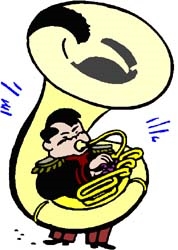
National Musical Days?
Honey, I don't even know if there is a national harmonium day.
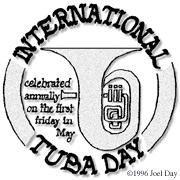
Can a Bass Clarinet play Tuba music?
Advanced and professional bass clarinetists read tuba and bassoon parts at sight all the time. It's simply a required skill at that level. But, it's an advanced skill and not all that common at the high school level. Tuba is written in concert pitch in bass clef, bass clarinet is written in Bb in treble clef. As long as you can read C bass clef and immediately transpose it to Bb treble clef (and the fingerings of the bass clarinet) then you're good to go. Another "but" though - bass clarinets aren't so great for marching with. Proper playing position (straight in front of you, not slung like a sax) makes marching with one a real pain in the knees. There are better choices.
For a lighter version instrument for a tuba player you might consider either the EEb tuba or euphonium. Euphonium would be the easier switch but EEb tuba is the most similar sound to BBb tuba and sousaphone. Euphonium (bass clef) uses the same fingerings and reads in bass clef as does the BBb tuba. EEb tuba reads the same part as the BBb tuba but has different fingerings. Either is much lighter than a concert tuba and a fiberglass EEb sousaphone isn't very heavy at all.
If you're having health problems though, maybe you should consider playing something in the pit. A lot of tuba players pick up bass guitar really easily and a bass guitar is a pretty useful instrument in the pit (and lots of other places). Tympani is in bass clef and the music (usually alternating I V I) is very similar to many tuba parts.


